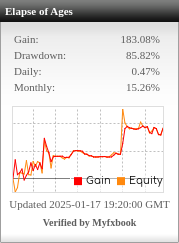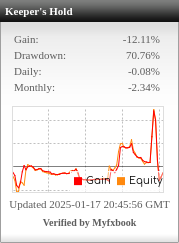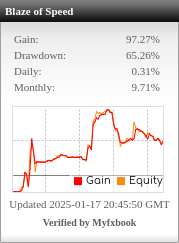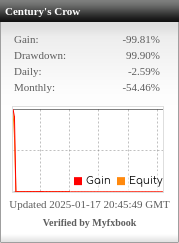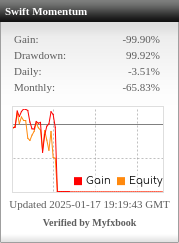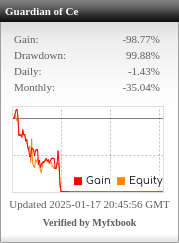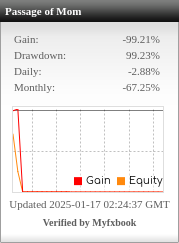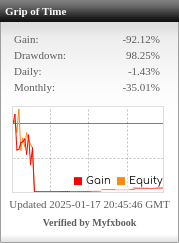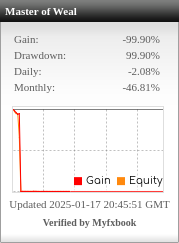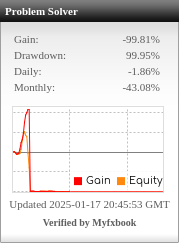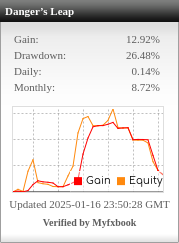Table of Contents
- Key Elements of Your Desired Strategy:
- Strategy Adaptation Across the 12 Trading Methods:
- 1. Price Action Trading:
- 2. Range Trading Strategy:
- 3. Trend Trading Strategy:
- 4. Position Trading:
- 5. Day Trading Strategy:
- 6. Scalping Strategy:
- 7. Swing Trading:
- 8. Carry Trade Strategy:
- 9. Breakout Strategy:
- 10. News Trading:
- 11. Retracement Trading:
- 12. Grid Trading:
- Enhancing the Strategy:
My desired strategy, can you adaption with those 12 strategies above and use my signals, make it greater possible: 1. Open orders duplicate allowed 2. Close orders with a profit for 1-5% from the total capital or close by using signals that hold positions for no more than 5 days 3. Use Break-Even profits and use trailing according to appropriate signals to catch up with profits as quickly as possible 4. I need RRR more than 1:3 5. Close all orders before the market closes every Friday 6. Consec win/loss trades > 2
To adapt your desired strategy with the 12 trading methods and signals you provided, we can combine specific features from each strategy to create an enhanced, hybrid approach. Let’s structure it step by step:
Key Elements of Your Desired Strategy:
- Open Duplicate Orders: This allows more flexibility in taking multiple trades if the conditions allow.
- Profit Target: Closing orders with 1-5% profit from the total capital.
- Time-Limited Holds: No position should last more than 5 days.
- Break-Even and Trailing Stop: Secure profits with a break-even and then trail the stop to maximize gains.
- High RRR (1:3): Ensuring risk is minimized and profits are large enough to justify trades.
- Close by Friday: All positions are liquidated before the market closes on Friday.
- Consecutive Wins/Losses: Focus on having more than 2 consecutive wins or limiting losses.
Strategy Adaptation Across the 12 Trading Methods:
1. Price Action Trading:
- Signals: Use Candle Patterns and Fractals to capture high-quality reversal or breakout trades.
- Adaption: These signals can be used to open multiple positions during a strong price action movement, with a stop-loss placed at key price levels. The trailing stop and break-even would be applied as soon as the price moves favorably.
2. Range Trading Strategy:
- Signals: Apply Bollinger Bands, RSI, and Stochastic for entering positions at the range extremes.
- Adaption: Open trades when the price reaches either overbought or oversold levels. Use trailing stops aggressively to capture small but consistent gains within the range. If the trade doesn’t meet profit criteria within 5 days, exit by signal.
3. Trend Trading Strategy:
- Signals: Combine ADX, Ichimoku, and Super Trend to ride strong market trends.
- Adaption: Open duplicate positions in a strong trend confirmed by ADX (>25) and Ichimoku cloud direction. Apply the trailing stop to catch the bulk of the move while closing trades that meet the 1-5% profit or exceed 5 days of holding.
4. Position Trading:
- Signals: Use Ichimoku and Hull Moving Average for longer-term trend confirmation, but limit holding time to 5 days.
- Adaption: Position trading signals are generally longer-term, but in your strategy, we can shorten this by closing trades within 5 days if the target profit is not reached.
5. Day Trading Strategy:
- Signals: Utilize VWAP, Momentum, and RSI to capture intraday moves.
- Adaption: Open multiple positions based on intraday momentum and close them by the end of the trading day or use your break-even and trailing stop to capture small profits. Ensure no trades remain open on Fridays.
6. Scalping Strategy:
- Signals: Leverage Parabolic SAR, Stochastic, and VWAP for fast entries/exits.
- Adaption: Scalping will require tighter trailing stops and quicker moves to break-even. You can open duplicate orders on small moves and close them as soon as you hit the profit target or within 5 days.
7. Swing Trading:
- Signals: MACD, RSI, and Fractals to identify swing highs/lows.
- Adaption: Swing trading offers opportunities to capture larger moves. Duplicate orders can be opened as long as the swing signal is valid, with the trailing stop applied to catch larger profits. Exit after 5 days or on the Friday close.
8. Carry Trade Strategy:
- Signals: KAMA and Directional Index for long-term bias, but constrained to short-term holding.
- Adaption: In traditional carry trade, positions are held long-term, but with your strategy, use the trailing stop to secure short-term profits within 5 days.
9. Breakout Strategy:
- Signals: Bollinger Bands, ATR, and Momentum for volatility-based breakouts.
- Adaption: Use breakout signals to open duplicate trades. Once the breakout occurs, the trailing stop will help capture further gains while securing profits. Close the trade if the price meets the 1-5% target or exits by Friday.
10. News Trading:
- Signals: ATR, Momentum, and VWAP to capture volatility spikes.
- Adaption: News trading tends to be unpredictable, so quick entries with trailing stops and a break-even move are essential. Use this approach to exit trades quickly if the market moves in your favor.
11. Retracement Trading:
- Signals: Fibonacci Retracements, RSI, and Fractals for entry signals.
- Adaption: Enter on retracement to a key Fibonacci level with multiple orders. Apply trailing stop once the price resumes the primary trend. Close the trade either at the target profit or after 5 days.
12. Grid Trading:
- Signals: Generally grid strategies are less signal-based, but ATR or Bollinger Bands can help define volatile zones.
- Adaption: In a grid strategy, you can apply the trailing stop on profitable orders while still allowing duplicate trades. Close all positions before the end of the week or after 5 days to prevent overexposure.
Enhancing the Strategy:
- Duplicate Orders: This flexibility allows for scaling into trades during favorable conditions, especially in trending markets or during strong breakouts. Combining this with ADX for trend strength or ATR for volatility can provide an edge.
- Close Orders Based on Capital Gain or Signal: The 1-5% capital gain target works well with signals like Ichimoku, Candle Patterns, or Bollinger Bands to time exits when trades become profitable.
- Break-Even and Trailing Stop: Use Parabolic SAR or ATR for managing the trailing stop, ensuring that once the price has moved in your favor, the trailing stop locks in profits while allowing room for larger gains.
- RRR of 1:3: Targeting a risk-reward ratio of 1:3 is ideal for strategies like Breakout or Swing Trading. Use Fractals, RSI, and MACD to spot high-probability trades and manage risk with well-placed stop losses.
- Weekly Close: Ensure that all trades are automatically closed by Friday using a time-based exit rule, combined with signals to prevent holding positions over the weekend.
- Consecutive Wins/Losses: This could be monitored in SQX by applying risk filters, ensuring the strategy does not become too risky if losses accumulate, or adding more trades if you’re on a winning streak.
By merging these trading strategies with your specifications, you’ll create a highly adaptable system that should perform well across different market conditions.


